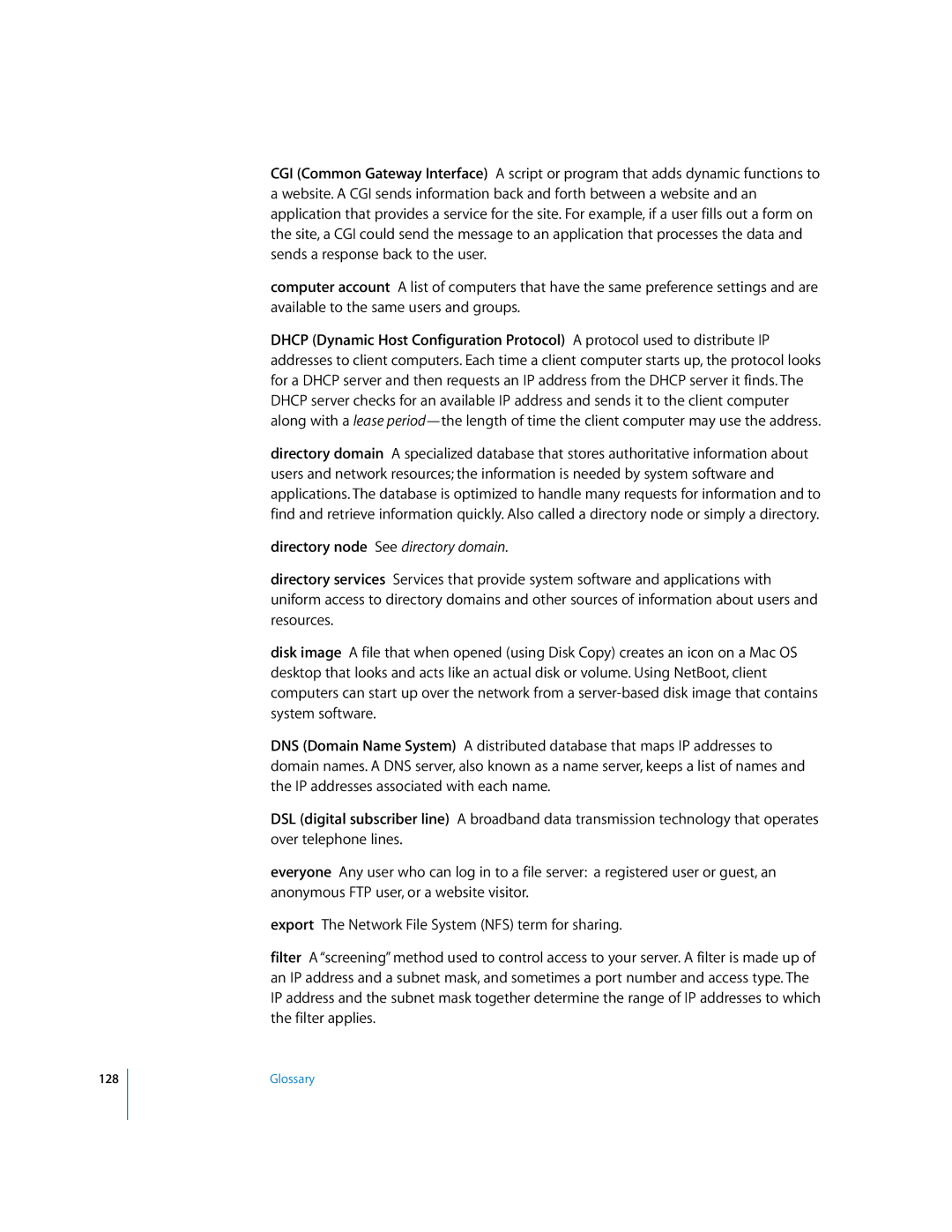
128
CGI (Common Gateway Interface) A script or program that adds dynamic functions to a website. A CGI sends information back and forth between a website and an application that provides a service for the site. For example, if a user fills out a form on the site, a CGI could send the message to an application that processes the data and sends a response back to the user.
computer account A list of computers that have the same preference settings and are available to the same users and groups.
DHCP (Dynamic Host Configuration Protocol) A protocol used to distribute IP addresses to client computers. Each time a client computer starts up, the protocol looks for a DHCP server and then requests an IP address from the DHCP server it finds. The DHCP server checks for an available IP address and sends it to the client computer along with a lease
directory domain A specialized database that stores authoritative information about users and network resources; the information is needed by system software and applications. The database is optimized to handle many requests for information and to find and retrieve information quickly. Also called a directory node or simply a directory.
directory node See directory domain.
directory services Services that provide system software and applications with uniform access to directory domains and other sources of information about users and resources.
disk image A file that when opened (using Disk Copy) creates an icon on a Mac OS desktop that looks and acts like an actual disk or volume. Using NetBoot, client computers can start up over the network from a
DNS (Domain Name System) A distributed database that maps IP addresses to domain names. A DNS server, also known as a name server, keeps a list of names and the IP addresses associated with each name.
DSL (digital subscriber line) A broadband data transmission technology that operates over telephone lines.
everyone Any user who can log in to a file server: a registered user or guest, an anonymous FTP user, or a website visitor.
export The Network File System (NFS) term for sharing.
filter A “screening” method used to control access to your server. A filter is made up of an IP address and a subnet mask, and sometimes a port number and access type. The IP address and the subnet mask together determine the range of IP addresses to which the filter applies.
Glossary
